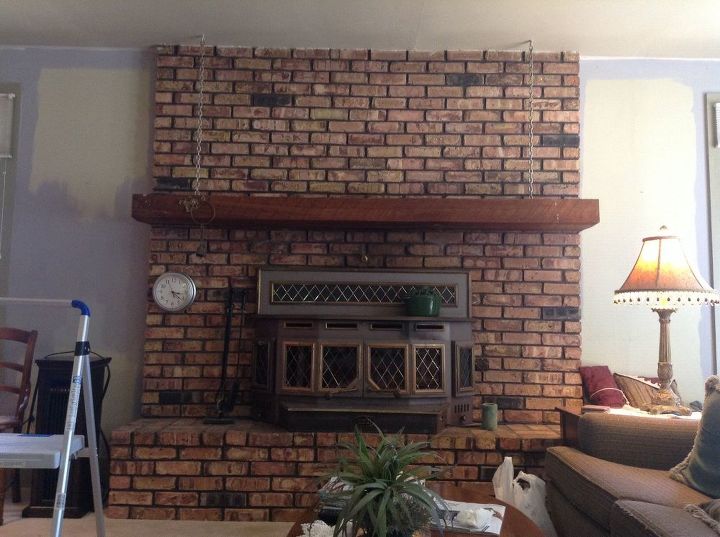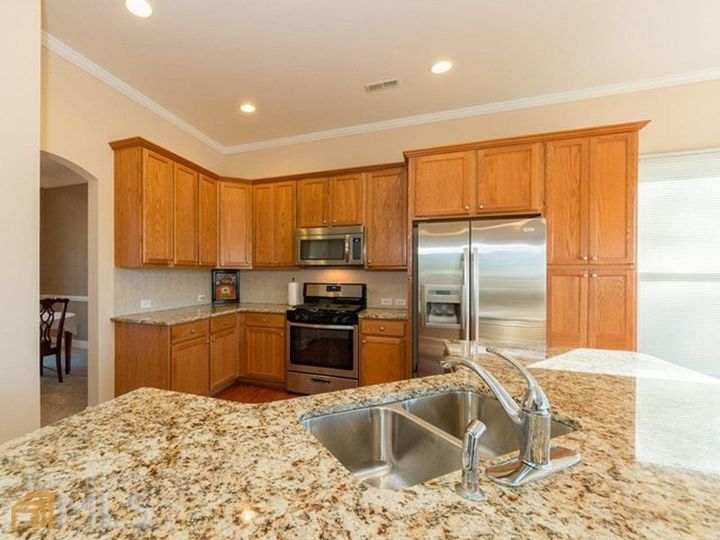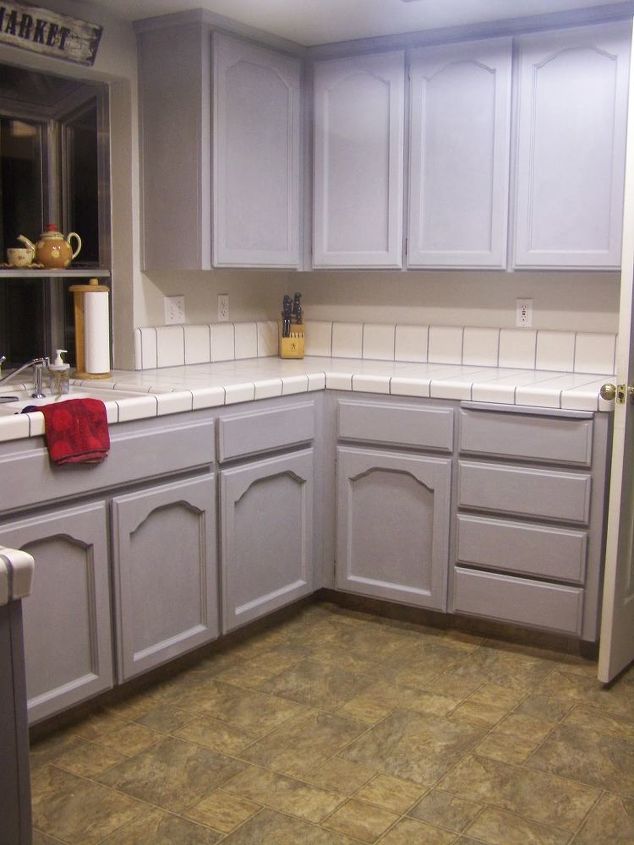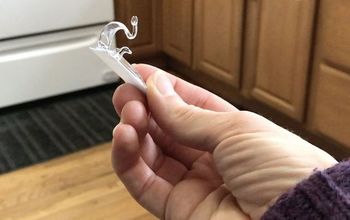How do I achieve a distressed look on unfinished or rough cement wall?
Related Discussions
Should I paint or stain my oak kitchen cabinets?
I was wondering if you could help me with something -- I have an entirely oak kitchen. I know it's the rage now to paint or gel stain cabinets. I've been considering ... See more
How to paint a metal front door?
How do I paint my front door? It's metal.
How to paint grout?
How do I paint grout to change the color? The grout is in great shape, but the color - meh.
How to whitewash a brick fireplace?
What is the best method to whitewash bricks surrounding a fireplace?
Should I re-stain or paint my cabinets?
Edit:””” 3 years later😂 I decided to paint them white and I am so very pleased with the results!We bought a new house with these ugly cabinets. I really cann... See more
Stripping off A LOT of chalk paint
I've had my first (of many, I'm sure) disastrous DIY project. I have covered my entire kitchen cabinetry with chalk paint and I hate it. It's streaky, it's cracking, ... See more





Hi. The "easiest" way to distress a wall is to paint a design or stencil the wall in certain areas, then using plaster-of-paris for an interior wall or exterior spackling for an exterior wall, smear over the painting. When dry sand to allow the painting show through. Happy DIY'ing!
Usually using Salt Paint, several coats, dependent on the effect you want, is the means most distress anything.
Texturing that needs that to be Spot applied with a Tap Application Method using a Sponge to mostly any material, and dependent on the color pallette you select, this also provides an illusion of texture depth [as would regular paints of contrasting colors also create this illusion of increased depth by Sponge Application].
My concerns however with a Direct Application of the Paint with Salt Additive into Concrete, without a primer however is the residual mess that may arise by the facts:
A. Because Salt does not agree well with concrete, to distress concrete you need only a very small amount of saltwater in the mix, about 2 of 72 parts.
B. Making Salt Paint [usu. 4 oz Epsom Salt or Table Salt or less per gallon, reliant on how much distress you want] requires more salt than usually agrees with wet or dry concrete.
C. Salt paint cannot be immediately painted atop a wet primer, without resulting a Salt Residue in the Primer too, but rather you need to wait for the Primer to set and cure for 3 days or so, [reliant on humidity, until it is no longer Sticky to the touch]
D. Sponge will more frequently than an ordinary brush, need to rinse, because the salt rather than paint, will more tend to clump on the surface.
So, you are best to test at least 6 small areas with at least 3 to 5 coats:
A. The first 3 areas: Dab method with a sponge
1. Primer on the Concrete, can be 1 coat or 2 or None.
2. Salt Paint #1 can brush or roll on the Dry Primer.
3. Salt Paint #2 [Dark] Dabs and Taps on with a Sponge or a Textured roller.
4. Salt Paint #3 [Light] Dabs and Taps on with a Sponge or Textured Roller.
B. The second 3 areas: Dab and Streak method with sponges and 1" Brushes.
1. Paint #1 [Dominant] can brush or roll as a substitute for Primer, and should streak by brush in areas you want to stand out most.
2. Paint #2 [Dark] Dabs and Taps on with a Sponge #2 or a Textured roller #2 and streaks by brush #2
3. Paint #3 [Light] Dabs and Taps on with a Sponge #3 or Textured Roller #2 or #3 and needs not streak, but can streak by brush #1, #2 and #3
And understand: with distressing by method A, you usually do not like the initial effect, but as you can always sand what you do not like off, and sweep up the mess, thus the Procedure of Distressing will always involve: Sanding it down until you like the result.
For insights, Here is a Website with realistic depictions about making and applying Salt Paint:
http://www.bluegrassjunkrevival.com/index.php/2016/10/26/how-to-create-your-own-diy-salt-wash/
To I, however, I would never distress a permanent fixture or wall, let, by method A, [to I, it is like putting Foil Sparkles and Gold Stars in the paint; General Purpose: to Amuse Kids].
I refer any Salt Paint to: portables and furniture purposes only, because: Tap Application of multiple colors by either 'Dab on Dab' or 'Dab and Streak' methods [where you streak with a Brush, after you dab on the paint with a Sponge] always yeilds a Similar Distressed appearance, exactly where you want that effect, without the mess, and with far more professional results, via: usage of Regular Paint, as long as you Contrast Colors or use colors that comprise a Base Color, for example:
Orange Base with Yellow Dabs over Red Steaks and Dabs.
Aqua Green streaks with yellow dabs, dark green streaks, over a white dabs and blue
streaks substitute for primer.
Blue streaks with pink or white dabs and purple streaks.
Because:
A. The goal of using composite colors as blue+yellow=green is usually to make it look like the paint colors applied wet on wet and by some miracle these limitedly bled into each other in very strange or predictable ways, by wet on wet, even though they were different colors in wet on dry applications, in multiple phases of Dab and Streak.
B. The goal of using matching but not composite colors is to make it look like the paint went to a formal affair, as the Paint#1=Pants, Paint#2=Shirt, and Paint#3 is the tie.
And the real pro of Dab and Streak is that:
You get an effect of Distress without any of the clumpiness you get from the Salt Additive, [which always tends to chip or flake away in No Time, anyways, to extents persons usually end up sanding off all of the salt clumps to dab it later on as touch up later], plus: what would ordinarily look like mistakes, blends right in with a dab or two, to extents that it is great for the beginner or novice artist.
The real con of Dab and Streak is:
If you have no artistic aptitude atall to begin with, you will need to practise for a while [a spot you plan to place an in-wall cabinet or shelving or bookcase, is the best place to begin] and the learning curve and time spent until you get to an artistic level of practise will be far more lengthy, until you finally get a hang of it, and realize: 'This is Easier than the Archaic Horse Hair Brush Method which is often very unforgiving of streaks', which is exactly why 'dab and streak method' even became invented in the first place, people got sick and tired of sanding down and touching up streaks that occur when your paint gets thick on a hot day.
There’s a lot simpler way to distress the link listed above dark color under light and sand is the easiest way or dark over light.